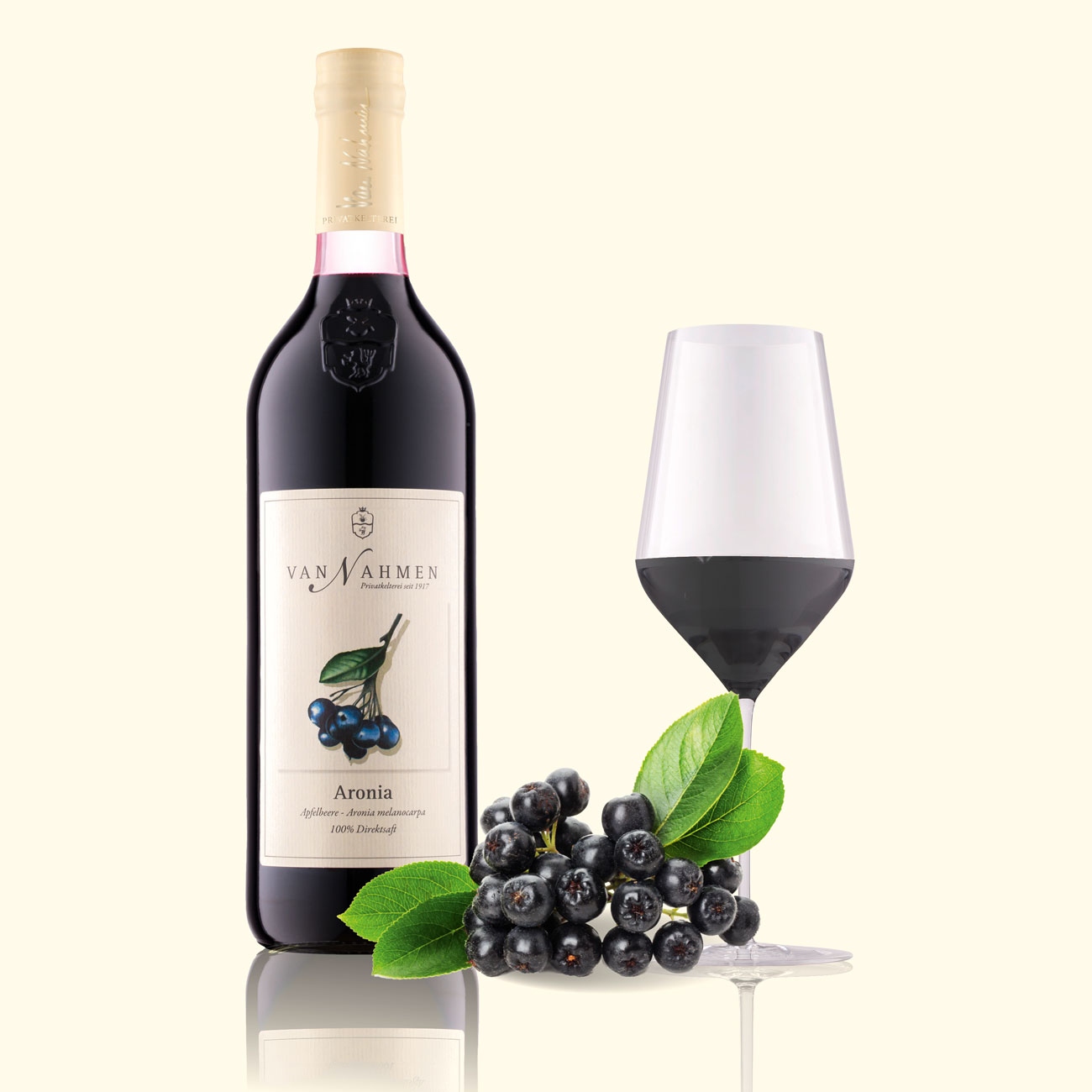Aronia Juice (BIO)
Origin
The aronia shrub originally comes from eastern North America and has been grown in Europe since the early 20th century. It produces pea-sized blue-black berries which offer a tart juice: the fresh aronia berries are gently transformed into a pure directly-pressed juice. Aronia juice is particularly rich in polyphenols which have high antioxidant potential, and tastes fantastic in a spritzer or mixed with apple juice or tea. Recommen-ded intake 100 ml per day.
| Cuisine: | French cuisine, German classics, Mediterranean cuisine |
| With meat and fish: | Beef, Game, Lamb |
| Goes with: | Mushrooms |
| Colour: | dark |
| Juice style: | characterful, dry |
Expertise
In the glass, this very viscous juice is a deep black colour with hints of garnet red. It offers a densely woven bouquet of cassis liqueur and elderberry juice aromas, dominated by cigar box, pepper and aniseed with a hint of black olive. On the palate it opens up into a complex interplay between delicate sweetness, dark fruit aromas and vegetal freshness. The most striking element of aronia juice is its dense struc-ture of tannins whose grainy texture command the palate, making the drink the perfect accompaniment for even rich meat dishes. The juice absolutely must be enjoyed straight: if mixed with water, the tannins dominate and are no longer kept so skilfully in check by the delicate fruity sweetness. The juice can easily stand up to powerful and spicy dishes. It goes well with all stews (such as Hungarian goulash), Christmas goose with red cabbage and apple, or even grilled entrecote. Vegetarians can enjoy the juice with chilli sin carne.


